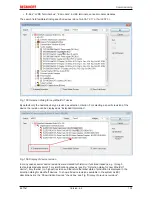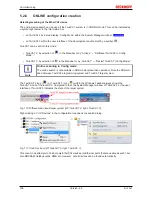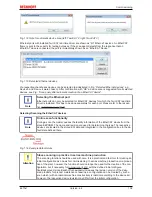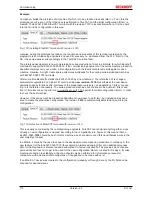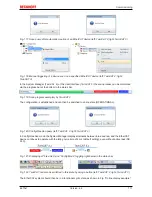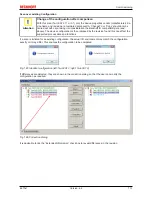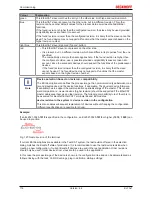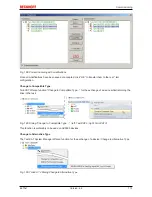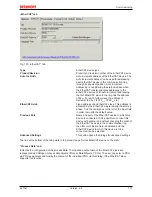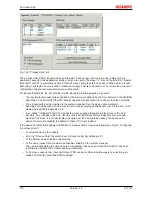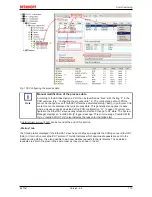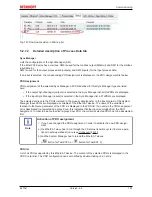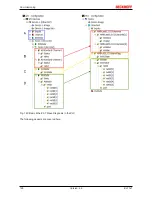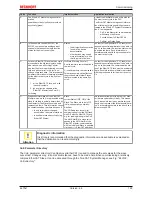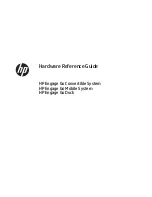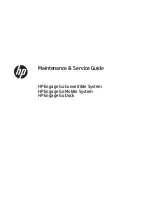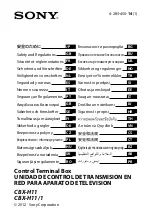
Commissioning
EL70x1
114
Version: 4.4
Colour
Explanation
green
This EtherCAT slave matches the entry on the other side. Both type and revision match.
blue
This EtherCAT slave is present on the other side, but in a different revision. This other
revision can have other default values for the process data as well as other/additional
functions.
If the found revision is higher than the configured revision, the slave may be used provided
compatibility issues are taken into account.
If the found revision is lower than the configured revision, it is likely that the slave cannot be
used. The found device may not support all functions that the master expects based on the
higher revision number.
light blue
This EtherCAT slave is ignored (“Ignore” button)
red
• This EtherCAT slave is not present on the other side.
• It is present, but in a different revision, which also differs in its properties from the one
specified.
The compatibility principle then also applies here: if the found revision is higher than
the configured revision, use is possible provided compatibility issues are taken into
account, since the successor devices should support the functions of the predecessor
devices.
If the found revision is lower than the configured revision, it is likely that the slave
cannot be used. The found device may not support all functions that the master
expects based on the higher revision number.
Note
Device selection based on revision, compatibility
The ESI description also defines the process image, the communication type between mas-
ter and slave/device and the device functions, if applicable. The physical device (firmware,
if available) has to support the communication queries/settings of the master. This is back-
ward compatible, i.e. newer devices (higher revision) should be supported if the EtherCAT
master addresses them as an older revision. The following compatibility rule of thumb is to
be assumed for Beckhoff EtherCAT Terminals/ Boxes/ EJ-modules:
device revision in the system >= device revision in the configuration
This also enables subsequent replacement of devices without changing the configuration
(different specifications are possible for drives).
Example:
If an EL2521-0025-
1018
is specified in the configuration, an EL2521-0025-
1018
or higher (-
1019
, -
1020
) can
be used in practice.
Fig. 127:
Name/revision of the terminal
If current ESI descriptions are available in the TwinCAT system, the last revision offered in the selection
dialog matches the Beckhoff state of production. It is recommended to use the last device revision when
creating a new configuration, if current Beckhoff devices are used in the real application. Older revisions
should only be used if older devices from stock are to be used in the application.
In this case the process image of the device is shown in the configuration tree and can be parameterised as
follows: linking with the task, CoE/DC settings, plug-in definition, startup settings, ...
Summary of Contents for EL7031
Page 1: ...Documentation EL70x1 Stepper Motor Terminals 4 4 2017 08 18 Version Date...
Page 2: ......
Page 6: ...Table of contents EL70x1 6 Version 4 4...
Page 48: ...Mounting and wiring EL70x1 48 Version 4 4 Fig 32 Other installation positions example 2...
Page 96: ...Commissioning EL70x1 96 Version 4 4 Fig 90 Incorrect driver settings for the Ethernet port...
Page 179: ...Commissioning EL70x1 179 Version 4 4 Index 7020 POS Outputs Ch 1...
Page 203: ...Commissioning EL70x1 203 Version 4 4 Index 7020 POS Outputs Ch 1...






